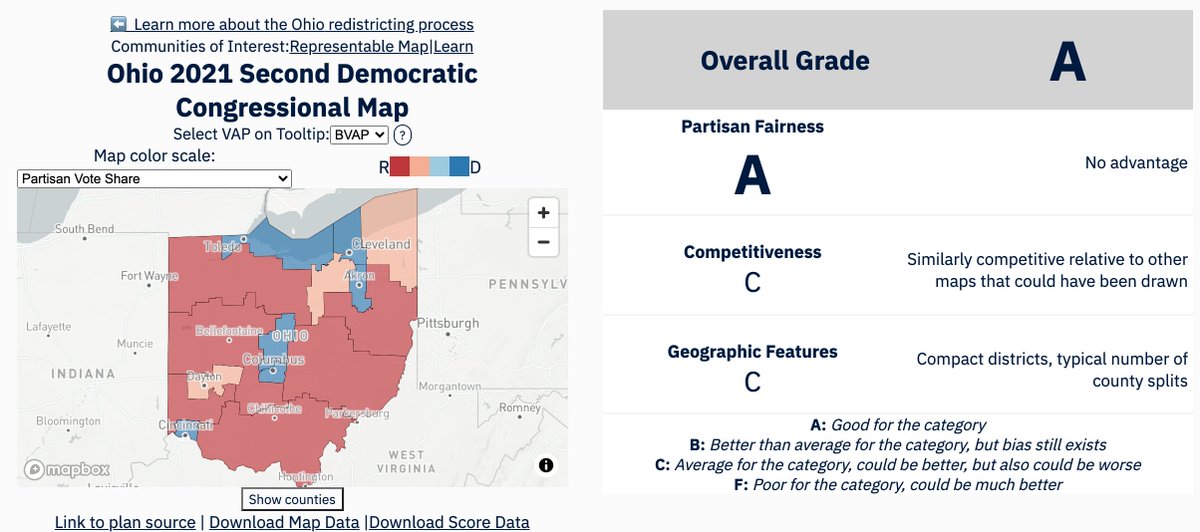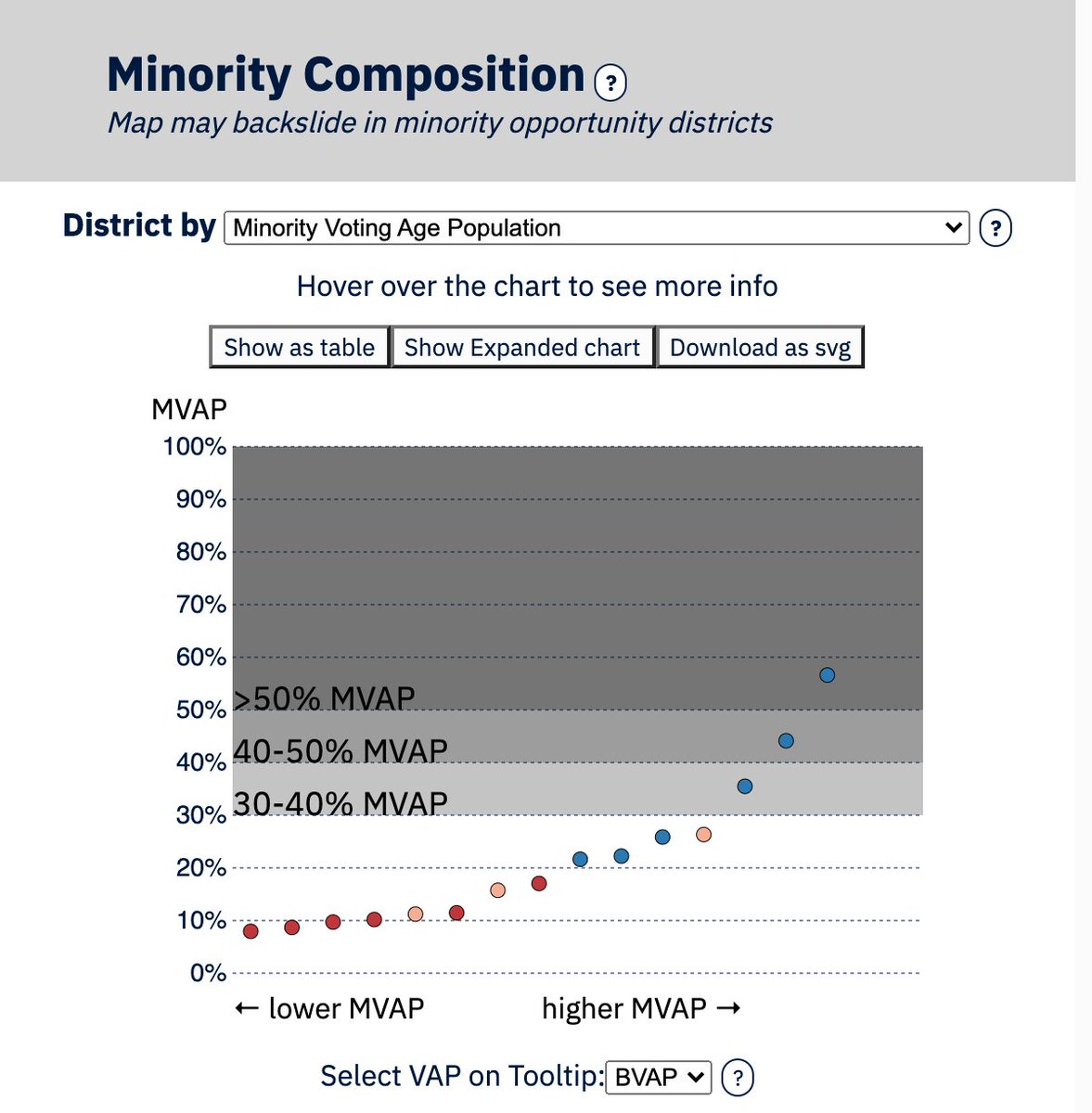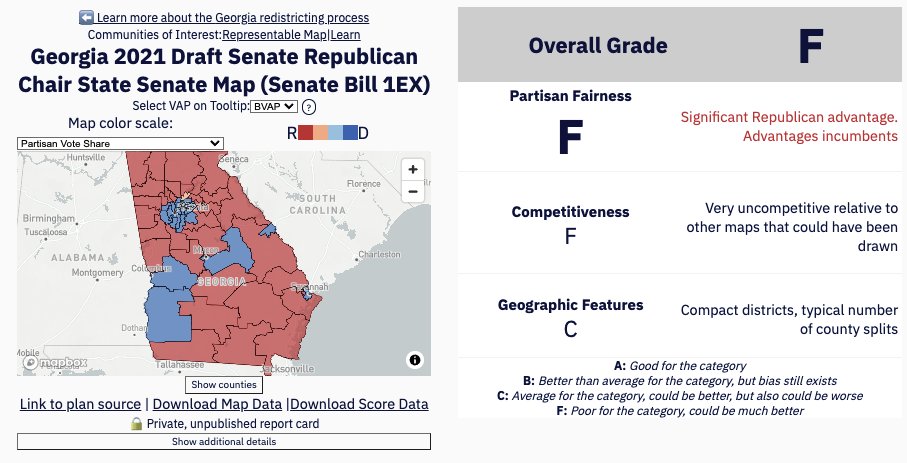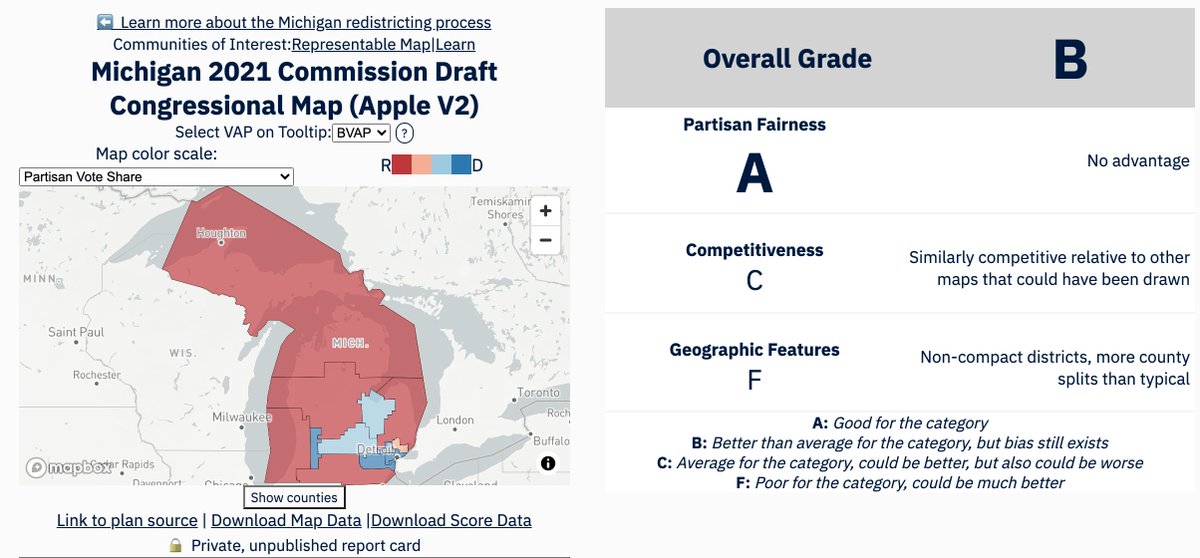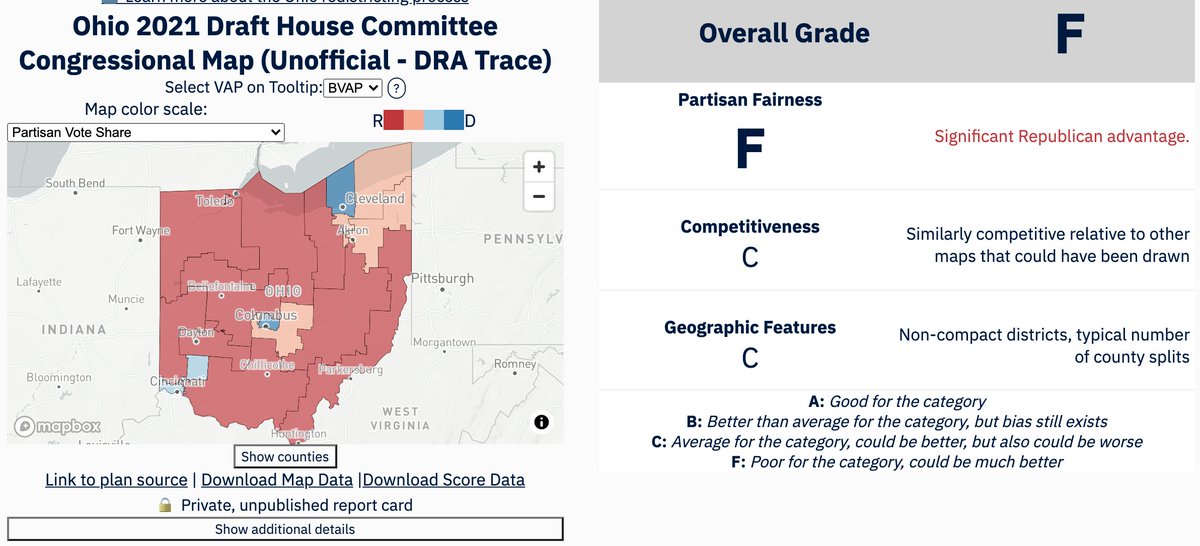
Note that the use of the ensemble to evaluate maps with four or fewer districts risks obscuring the influence that a single district change in either Partisan Fairness or Competitiveness can make to overall letter grades. (1/5)
And, more importantly, this matters to how residents who live in these states will experience these maps. Letter grades, in the cases of extremely low-district states, should be considered secondarily to other metrics provided. (2/5)
It is important, in these instances, for mapmakers to consider other criteria, such as Communities of Interest, Minority Composition, and state-specific criteria, in both line drawing and evaluation. (3/5)
In Utah, specifically, there should be special consideration to Salt Lake City and Salt Lake County, due to its unique Communities of Interest and the relative density of partisans that differ from much of the rest of the state. (4/5)
Thus, a map that splits Salt Lake County more than necessary should be carefully examined for fairness to the residents of the region. (5/5)
#PGP_UT #UTPol #Redistricting #FairMaps
#PGP_UT #UTPol #Redistricting #FairMaps
• • •
Missing some Tweet in this thread? You can try to
force a refresh


